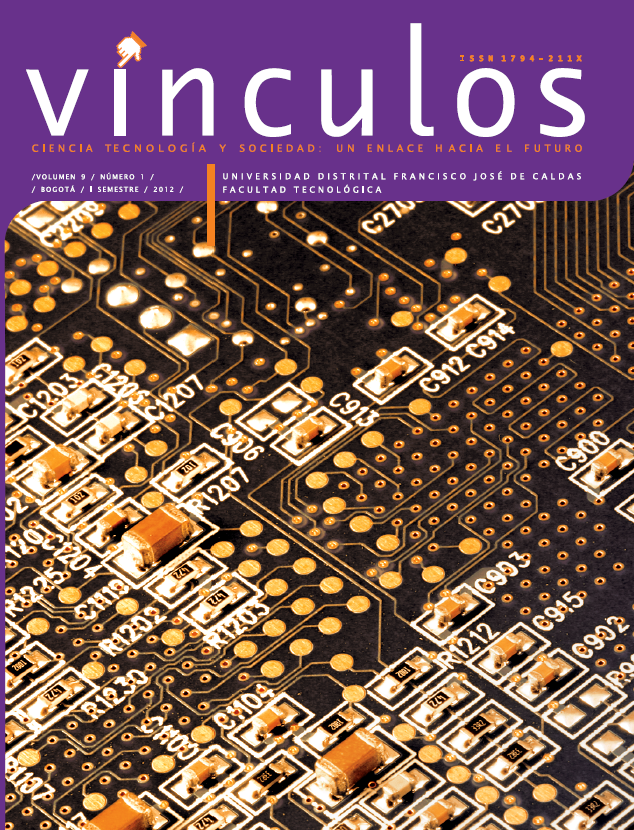DOI:
https://doi.org/10.14483/2322939X.4202Publicado:
2013-07-15Número:
Vol. 9 Núm. 1 (2012)Sección:
Investigación y DesarrolloTHREE-DIMENSIONAL OBJECT RECONSTRUCTION
Palabras clave:
Computer graphics, 3D reconstruction, volume modeling, volume visualization. (es).Descargas
Resumen (es)
Tridimensional object reconstruction is achieved by obtaining the object’s representation in the computer memory maintaining the volume and shape features. This is known as three-dimensional model. Depending on the mathematical and conceptual formulation, these models can be classified into three types: geometric models, solid models and volumetric models. The development of these models offers a set of tools that allow us to study the properties of objects that one want to represent and display the information contained on these objects. This facilitates the observer to understand and interpret the information as well as to manipulate and simulate the real object on the computer model. This article aims to review the context in which threedimensional objects reconstruction is developed. We want to establish an overview of terminology to exhibit and raise the problems that arise in this area.Referencias
Mäntylä, M., and Sulonen, R. “An introduction to solid modeling”. Computer
science press 8,1, 45-60, 1988.
A.G. Requicha and R.B. Tilobe. “Mathemattical foundations of constructive solid geometry: General topology of regular closed sets”. Technical report, Tech. Memo. 27. Production Automation Project, Univ. Rochester, 1977.
Thibault, W.C., and Naylor, B.F. “Set operations on polyhedra using binary space trees”. Computer Graphics (SIGGRAPH’ 87 Proceeding) 21, 4, 153-162, 1987.
Navarro, I., Ayala, D., and Brunet, P. “Extended octree representation of general solids with plane faces: Model structure and algorithms”. Computer and Graphics 13, 1, 5-16, 1989.
S.R. Marschner and R.J. Lobb. “An evaluation of reconstruction filters for volume rendering”. In Proceesings viaulization’ 94, pages 100-107, 1994.
A.G. Requicha. “Representation of rigid solids: Theory, Methods and Systems”. ACM, 12(4): 437-464, 1980.
Carlos sanchez Martín. “Microscopía confocal”. Technical report, servicio de microscopía confocal, 2003.
S. Wang and A. Kaufman. “Volumesampled voxelization of geometric primitives”. In Visualization’93. Pages 78-84, 1993.
A. Kaufman and E. Shimony. “3D scanconversion algorithms for voxel-based graphics”. In Proceedings of 1986 Workshop on Interactive 3D Graphics. Pages 51-64, 1986.
M.R. Styt, G. Frieder, and O. Frieder. “Three-dimensional medical imaging.
Algorithms an computer systems”. ACM Computing Surveys., 23(4):421- 499, 1991.
G. M. Nielson. Volume Modeling. In: Volume Graphics, M. Chen et al(eds.),
Springer, pp. 29-48, 2000
C. Carr1, R. K. Beatson, J. B. Cherrie. “Reconstruction and Representation
of 3D Objects with Radial Basis Functions”. ACM SIGGRAPH 2001, Los Angeles, CA, USA. 12-17, 2001.
W. Schroeder, K.M. Martin, and B. Lorense. “The visualization toolkit: an object-oriented approach to 3D graphics”. 4th Edition. Kitware, Inc, 2006.
Shiuh-Yung Chen, Wei-Chung Lin, Cheng-Chung Liang and Chin-Tu Chen. “Imrpovement on dynamic elastic interpolation technique for reconstructing 3D objects from serial cross sections”. IEEE Trans. On Medical Imaging. 9(1):71-83, 1990.
J.M. Oliva, M. Perrin, and S. Conquillart. “3D reconstruction of complex polyhedral shapes from contours using a simplifield generalized voronoi diagram”. Computer Graphics Forum, 15(3): 397-408, 1996.
Gabor T. Hernan and Jayaram K. Udupa. “Display of 3D digital images: Computational foundations of medical applications”. IEEE Computer Graphics ans Applications, 3(5): 39-46, 1983.
B.T. Phong. “Illumination for computer generated pictures”. Communications of the ACM, 18(6): 311-317, 1975.
Wyvill, C. McPheeters and B.Wyvill. “Data structure for soft objects”. The Visual Computer. 2(4): 227-234, 1986.
William E.Lorensen and Harvey E.Cline. “Marching cubes: A high resoluction 3D syrface construction algorithm”. SIGGRAPH’87-ACM Computer Graphics, 21(4): 163-169, 1987.


2.png)



